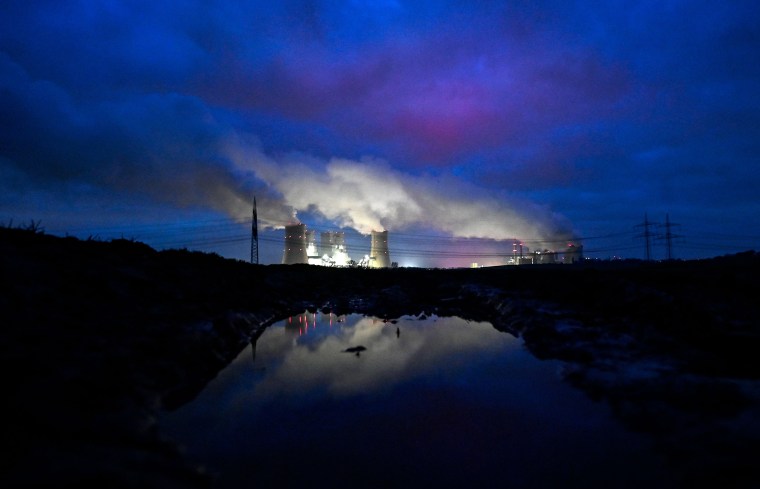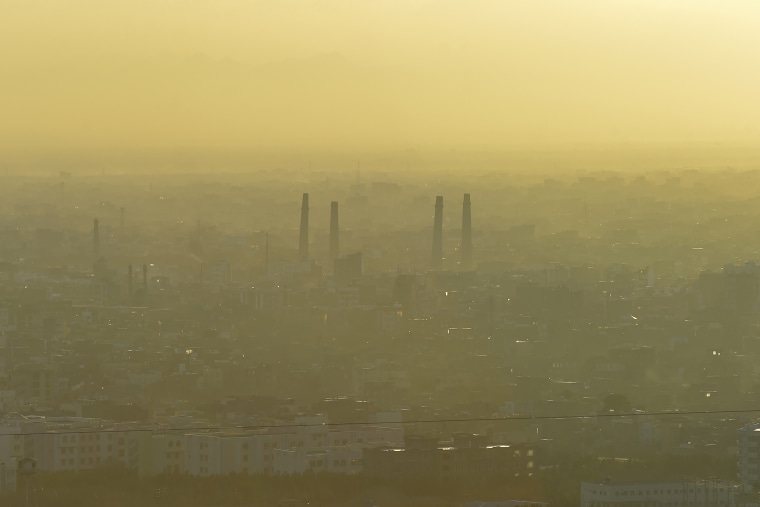The amount of carbon dioxide and two other greenhouse gases in Earth's atmosphere hit record highs last year, the World Meteorological Organization said in a report published Wednesday.
Carbon dioxide, methane and nitrous oxide are the three main greenhouse gases responsible for trapping heat in the atmosphere and driving global warming. The WMO’s latest Greenhouse Gas Bulletin, published annually, found that concentrations of all three reached new highs last year — a worrying trend and a sign that the world is not doing enough to fight climate change.
“WMO’s Greenhouse Gas Bulletin has underlined, once again, the enormous challenge — and the vital necessity — of urgent action to cut greenhouse gas emissions and prevent global temperatures rising even further in the future,” Petteri Taalas, the WMO’s secretary-general, said in a statement.
The increase in atmospheric carbon dioxide from 2020 to 2021 was larger than the average annual growth rate over the past decade, according to the report. The WMO also said last year's rise in methane levels was the biggest year-on-year jump since such measurements began almost 40 years ago.
Measurements for carbon dioxide, methane and nitrous oxide in 2021 were all above pre-industrial levels, “before human activities started disrupting natural equilibrium of these gases in the atmosphere,” the WMO said.
Concentrations of carbon dioxide, in particular, are closely monitored as an indicator of how humans are influencing Earth's climate. Burning fossil fuels releases carbon dioxide and other greenhouse gases that trap heat in the atmosphere.
A separate report released Wednesday by the United Nations warned that the world is “nowhere near” hitting its targets to cut greenhouse gas emissions, with the planet on track to see temperatures rise to 2.5 degrees Celsius (4.5 Fahrenheit) above pre-industrial averages by the end of the century.

World leaders are set to gather in Egypt in less than two weeks for the United Nations Climate Change Conference, known as COP27, or the 27th “conference of parties” under the U.N. Framework Convention on Climate Change.
This year’s meeting, which opens Nov. 6, will involve negotiations among countries over how to meet their emissions-cutting targets, what adaptation efforts to focus on and how to provide funding to countries least responsible for global warming and most affected by climate change.
The WMO’s report adds urgency to the talks. It found that concentrations of carbon dioxide in the atmosphere last year hit 415.7 parts per million, which means that for every 1 million molecules of gas in the atmosphere, more than 415 were carbon dioxide.
In 2020, the planet enjoyed a temporary reduction in carbon emissions because of coronavirus lockdowns around the world, but the WMO said there are indications that global carbon dioxide levels are continuing to rise this year.
The report also found that concentrations of methane, a potent greenhouse gas, were 1,908 parts per billion last year and that concentrations of nitrous oxide hit 334.5 parts per billion.
Human activities, including agriculture, coal mining and oil and gas production, account for around 60% of global methane emissions, researchers have said. Although it's not clear why methane concentrations jumped significantly last year, the WMO said the increase appears to be the result of “both biological and human-induced processes.”
Nitrous oxide is the third-largest contributor to climate change after methane and carbon dioxide. Agriculture, industrial activities, the burning of fossil fuels and other human activities account for around 43% of nitrous oxide emissions.
The WMO said concentrations of the greenhouse gas rose slightly more last year than from 2019 to 2020, faster than the average annual growth rate over the past decade.
The agency’s report uses data from a network known as Global Atmosphere Watch, which measures greenhouse gases and atmospheric composition.
Taalas said the report’s findings indicate that “time is running out.”
“The continuing rise in concentrations of the main heat-trapping gases, including the record acceleration in methane levels, shows that we are heading in the wrong direction,” he said in the statement.

